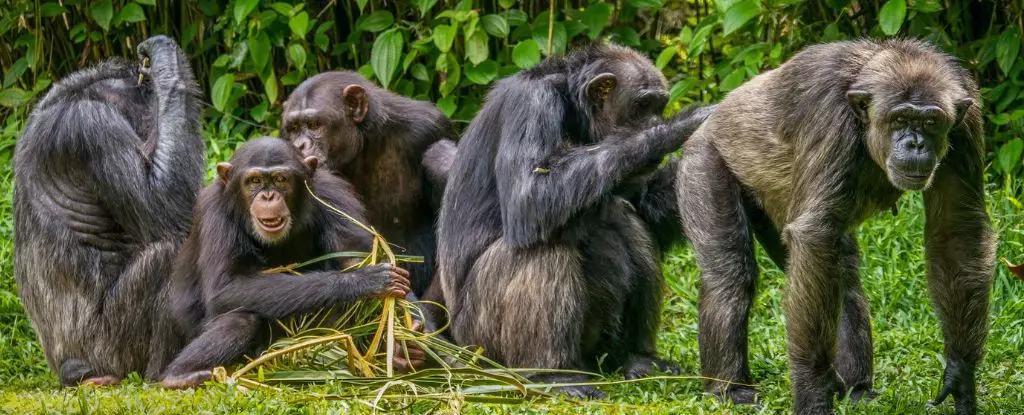The act of urination, often regarded as a private necessity, has emerged as a point of social interaction among chimpanzees in a groundbreaking study led by researchers at Kyoto University. While behaviors such as grooming and play within social groups have long been studied for their roles in communication and cohesion, the phenomenon of synchronized urination raises intriguing questions about social dynamics in our closest animal relatives. This peculiar behavior appears to extend beyond mere biological functions, indicating a complex layer of social etiquette and bonding that influences interrelationships among these primates.
The research, which monitored 20 chimpanzees over an extensive 604 hours, quantified the timing of urination across the group and revealed that when one chimp showed the instinct to urinate, nearby chimps—including those in hierarchical positions—were likely to follow suit. This instantaneous response mirrors the idea of social contagion observed in various behaviors. More specifically, the study noted that leadership dynamics significantly affected this contagion: lower-ranking individuals were more inclined to urinate in response to a higher-ranking chimp.
What makes this study particularly fascinating is its exploration of social hierarchy’s influence on urination. While one might intuitively connect proximate relationships—in which chimps groom or socialize closely—with synchronized urination, the findings showed otherwise. Contrary to initial expectations, it was the dominant members of the group whose actions set behavioral tones for the rest, irrespective of social closeness.
This result prompts reflections on how leadership may shape behaviors within both animal and human societies. In chimpanzees, those lower in the social hierarchy seem to align their behaviors—urination included—to their superiors, reinforcing the significance of social status. This pattern could indicate an innate sensitivity to the actions of dominant figures and possibly reflect an instinctual drive to maintain group harmony or avert conflict in communal settings.
The implications of these findings stretch beyond chimpanzees. Similar social behaviors observed in humans illustrate that our choice of when and where to engage in such mundane tasks as using a restroom can also be influenced by social norms and peer presence. The idea of public urination—as noted in varied cultural contexts—suggests that this primal instinct still emanates in modern societies, albeit expressed in more structured or socially acceptable ways.
An Evolutionary Perspective on Social Behavior
Primatologist Ena Onishi remarked on the evolutionary implications of synchronized urination, suggesting that this behavior could have deep roots in our shared ancestry. The Italian proverb “Whoever doesn’t pee in company is either a thief or a spy” underscores a cultural acknowledgment of communal activities, including urination. In Japan, the term “Tsureshon” not only describes communal urination but also suggests the intimacy of shared experiences, blending the physiological with the social.
As research begins to uncover the nuances of how social behavior influences biological functions, opportunities arise for further exploration. The connection between synchronized urination and community structure implies a potential evolutionary advantage tied to group cohesion and hygiene, both crucial in maintaining social systems among primates. The interdependence observed here could offer insights into the evolution of social networking in hominins.
This study acts as a catalyst for novel inquiries into social behaviors in primates and invites further exploration into human sociobiology. Understanding the contagion of urination could open doors to unraveling how social environments intricately shape behavioral patterns among species.
Future research could investigate whether this phenomenon appears in other contexts within social animals and what role environmental factors play in influencing such behaviors. Expanding this study into broader social structures could help us comprehend the implications of social hierarchy on behavior across varying species.
The significant finds regarding synchronized urination among chimpanzees not only illuminate aspects of primate social behavior but also resonate with our own actions and social norms. As we delve deeper into the interconnectedness of biology and social dynamics, we appreciate how behaviors deemed trivial can reveal profound layers of community functioning and structure. Engaging with these insights encourages a deeper understanding of the natural world and our place within it—both as primates and as social beings.


Leave a Reply